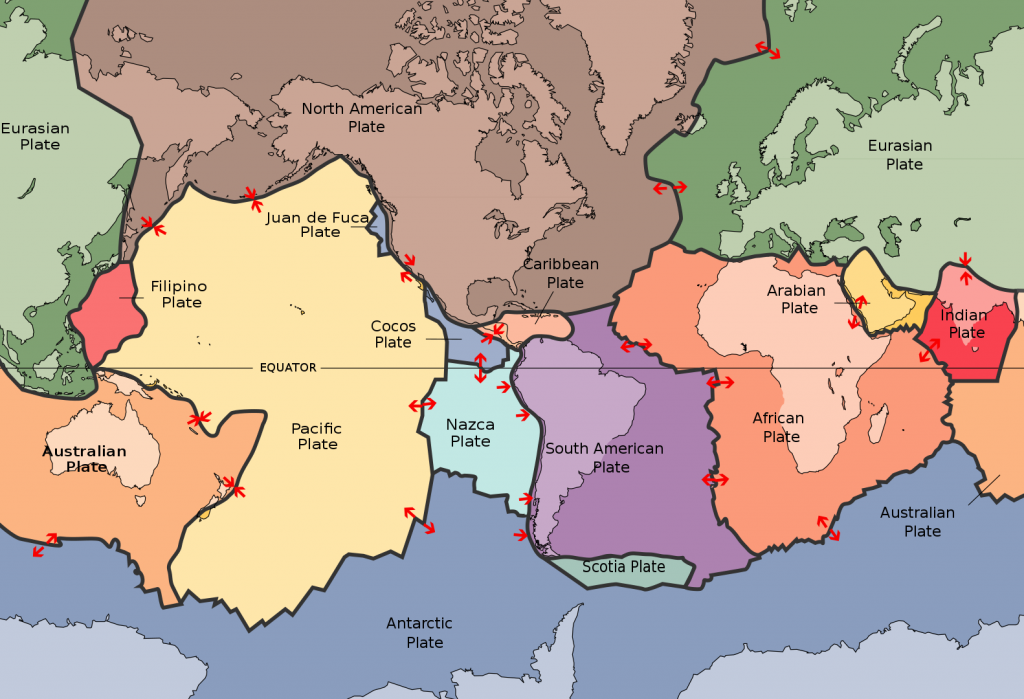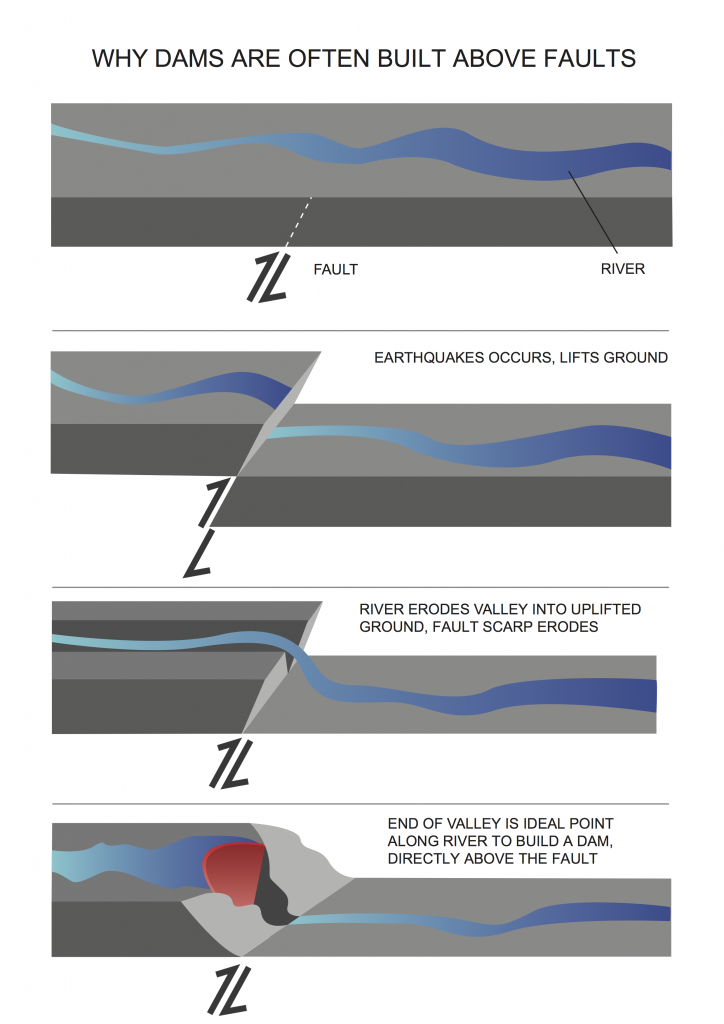Earthquakes occur when stress build-up in the earth’s crust exceeds the strength of the rock, but tectonic plate motion isn’t the only source of stress. We can change rock stress and trigger earthquakes to occur sooner than they may have otherwise.
It wasn’t until the late 1960s that scientists generally accepted the theory of plate tectonics, where the earth’s surface is broken up into segments that are spreading apart, colliding, or sliding past one another at various locations around the globe. Earthquakes occur more frequently at the plate boundaries, and determining the location of earthquakes has helped to define the shape of the plates. But stresses also build up within tectonic plates, which is why we can have earthquakes in Australia, even though none of the land is on a plate boundary.
The crust within a plate is made up of many ancient structures that have been pushed, pulled, folded, and twisted over millions of years, so it’s not just one homogenous lump of rock. There are many weak points within the crust from aeons of pressure and motion, and it is at at these weak points, or faults, that stress can be released in the form of earthquakes.
In addition to the stress from tectonic motion, human activity can change the stress fields near the surface of the earth. The most commonly known activity that triggers earthquakes is from some types of oil and gas operations, where fluid is injected and/or removed from the ground, or where rock is fractured using hydraulic pressure to allow these resources to flow to places where they can be recovered. Changing the pressure in the rock can allow energy to be released at nearby faults, and fluids that seep into faults can also lubricate them and allow them to slip more easily.
These types of resources mining activities should include seismic monitoring as part of their operations so that operational activity can be modified to minimise the risk of triggering large earthquakes that might affect the local population and environment.
One of the other sources of large-scale stress change that can trigger earthquakes is from the construction of dams that trap a large weight of water over a small area, which also allows the water to travel deeper into the earth to potentially activate nearby faults. The best place to build a dam is often in a steep valley, which may have been formed due to earthquake activity, as covered in this short article and discussed in the video below.
Reservoir Triggered Seismicity (RTS) does not occur every time a dam is built, but there have been dozens of cases, with the most famous being a magnitude 6.5 earthquake near Koyna Dam (India) in 1967, and a magnitude 6.0 earthquake near Hsinfengkiang Dam (China) in 1962, where the dams were damaged by these earthquakes.
We’ve even recorded this phenomenon in Australia after the construction of Talbingo and Thomson reservoirs, and it is recommended that any dam over 100m in height should consider the potential impact of RTS. Engineering dams accordingly, and monitoring structures to record their performance in an earthquake helps to make them safer in the short and long term.
Structures will generally only be affected by strong ground motion, so monitoring can be performed using relatively low cost accelerographs (as opposed to research-grade seismographs) that can measure ground motion exceeding ±4g (i.e. 4x the acceleration due to gravity – around 39mm/s²). This level of ground motion has been recorded before, but it is rare to see accelerations of greater than ±2g unless a station is very near the epicentre of a magnitude 6+ earthquake.
You can watch a one-minute video on this topic on this TikTok channel.



